Sighting in a Deer Rifle
It’s been over a decade since I stopped writing stuff for Deer and Deer Hunting. I used to be the go-to guy for answering questions on reloading and deer rifles. One of the most common questions I got was about sighting-in. I recently got that question again, and I went to pull up the posts I’d made here regarding the subject, and I realized that I had never saved a really good explanation of the basic underpinnings. This post is meant to correct that.
First off, let me give you a basic example of what is involved. Grab a baseball and go play some catch. If that is not an option, turn on a major league baseball game. When you pitch a baseball, the ball makes an arc through the air. At the top of the arc, it will be several inches above the direct line to the catcher’s mitt. That arc is a parabola.
A bullet leaving the muzzle of a rifle is doing the same exact thing. Gravity is acting on both the bullet and the ball with the exact same force. A rifle just flattens the parabola out, because the bullet is moving faster than the baseball. Also, remember that there is a higher arc in a ball thrown from the outfield to home plate versus a pitch from the pitcher. This is to overcome the constant pull of gravity exerted on the ball.

This chart shows the trajectory of a 30-06 150-grain load fired parallel to the ground. Notice that beyond 100 yards it drops like a rock.
If I took a 30-06 deer rifle and set it up on the bench to fire parallel to the Earth’s surface, it would be about an inch low at 100 yards and bury itself in the ground about 500 yards out. However, you need some sort of way to sight that rifle, and a modern scope usually rests about 1.5 inches off the line of the bore. If we co-witness the scope and the bore (boresighting), a bullet fired from the barrel is therefore going to be 1.5 inches lower than the crosshairs. However, that just gets us back to the example with the bare barrel. Ideally, we want to put the crosshairs on the deer, pull the trigger, and have the bullet hit where the crosshairs meet.
If you sight in your deer rifle at 50 yards, anything from a 30-30 to a 30-06 will be a bit high at 100 yards. However, shooting at only 50 yards does not give you a decent idea of the size of the group. You are much better off sighting in at 100 yards. What was a group that looked like they were all nearly touching blossoms out and now it’s spread all over a pie-plate at 100 yards.
Sight in at with the crosshairs at 100 yards? That’s fine, but what about a deer at 150 yards? 200 yards?
“I’ll aim over his back?”
Yes, but how much?
Here is the fix. Rather than sighting in dead-on at 50 yards, or dead-on at 100 yards, sight 2 inches high at 100 yards.
Here is what that looks like with a 30-06 with a 150-grain load:

The bullet leaves the barrel 1.5 inches below the line of sight (due to the location of the scope) it is dead-on at 50 yards, 2 inches high at 100 yards, dead-on again at 200 yards and 2 inches low at 233 yards. That gives me 233 yards of range where I do not have to worry about where to put the crosshairs.
Why not just sight in at 200 yards? That’s fine. However, all that is going to do is give you a longer walk. 2 inches high at 100 yards get the job done with half the walking.
I have my entire battery of deer rifles sighted in this way. The advantage is that all of them cover 200- plus yards without worrying about raising the crosshairs. There is a difference between these chamberings and these loads. The difference is that their Maximum Point Blank Range (MPBR) varies considerably. This isn’t the “Point Blank” you hear in cop shows. MPBR is simply the furthest point you can make a shot given a specific rifle, load, and size of the target without raising the crosshairs. For this discussion, I’ve set the size of the target to 4 inches (2 inches high/low). All my rifles and all of yours have a MBPR that you can calculate
However, I’ve gotten rid of most of the need for calculating it, by simplifying things. If all my rifles shoot 2 inches high at 100 yards, the MPBR is somewhere out beyond the farthest distance I am going to shoot. With my 30-06, it’s 233 yards. With my 25-06 it’s more like 50 yards further out. However, I don’t have to remember how far. All I have to remember is to keep my 44 Magnum and 30-30 inside 150 yards and not worry about the rest. The loads are starting to poop out before they’d get to 200 yards, but I still sight them in 2 inches high at 100 yards.
But I have a 270 Winchester.”
It works the same with nearly every deer rifle you can legally use on a deer. I have even used this with a 50 caliber muzzleloader. The only thing that changes is the MPBR number. That is, how far out you can safely put the crosshairs on the sweet spot and be assured the bullet is going there.
How much better is this than other methods?
If you go to the gun store and buy a rifle on the eve of the Rifle Opener and have the guy bore sight it for you, you can probably go hunting the next morning and not worry about a 25-yard shot of a treestand. I know this is heresy, but bore sighting alone is just a first step. I would not recommend it. However, lot of guys go no farther than that. Boresighting alone usually gets me on a sheet of copier paper at 100 yards.
Sighting in dead-on at 50 yards the night before the Rifle Opener in the headlights of your automobile will get you safe out to 100 yards, but I would not push it past that.
If you are honestly going out and spending time at the bench before season, learn to sight in 2 inches high at 100 yards and with a decent deer rifle, you can pick them off at beyond 200 yards without moving the crosshairs.

This post has already been read 361 times!
Views: 7
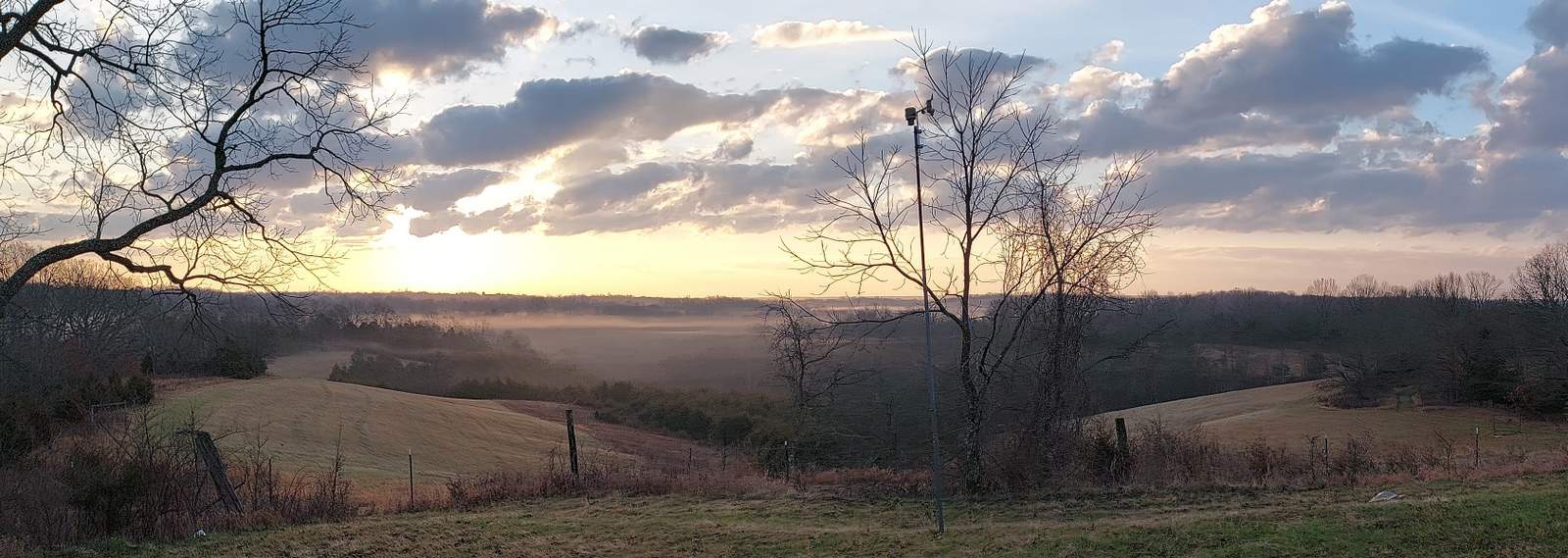
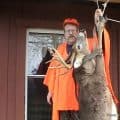
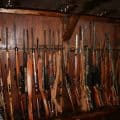

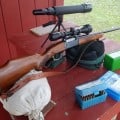
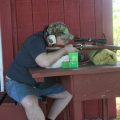
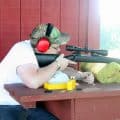

Comments
Sighting in a Deer Rifle — No Comments
HTML tags allowed in your comment: <a href="" title=""> <abbr title=""> <acronym title=""> <b> <blockquote cite=""> <cite> <code> <del datetime=""> <em> <i> <q cite=""> <s> <strike> <strong>